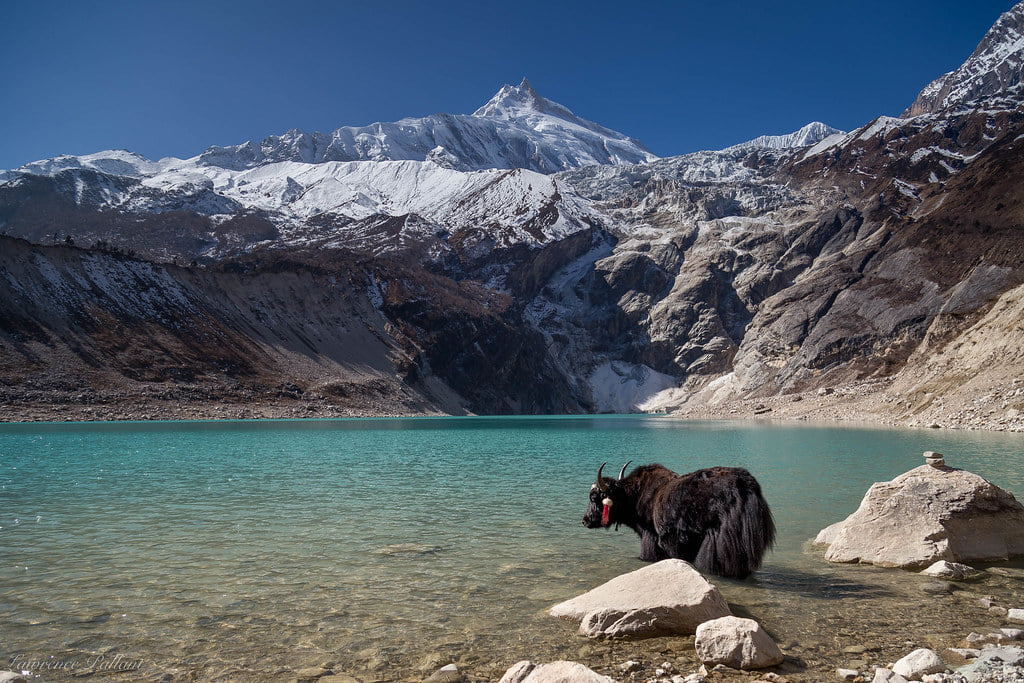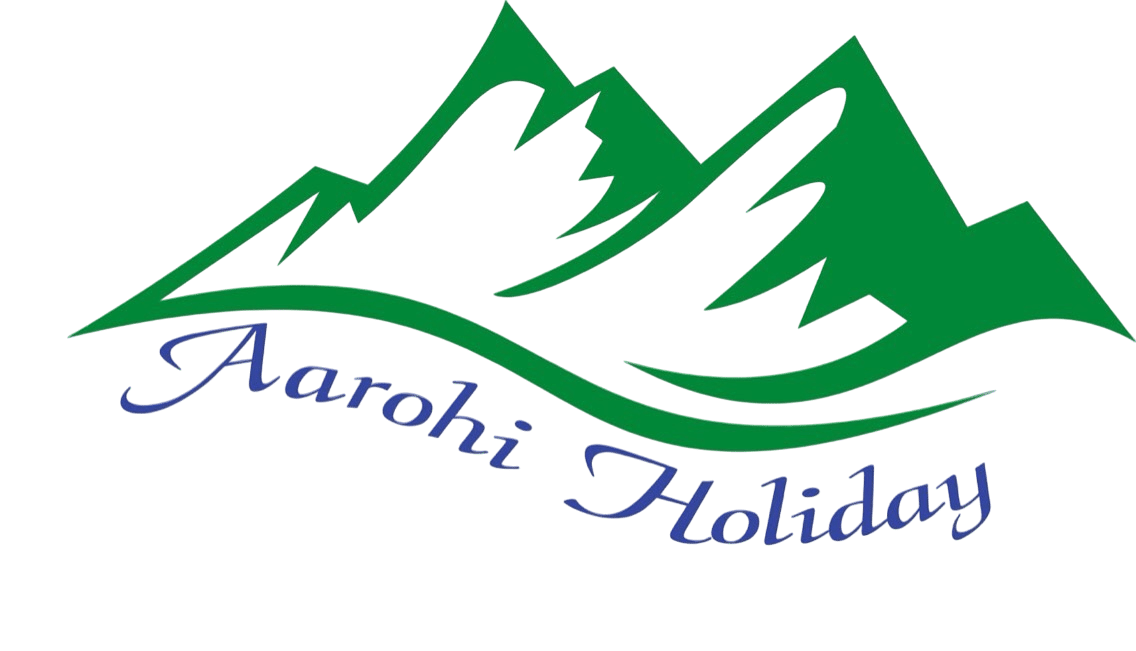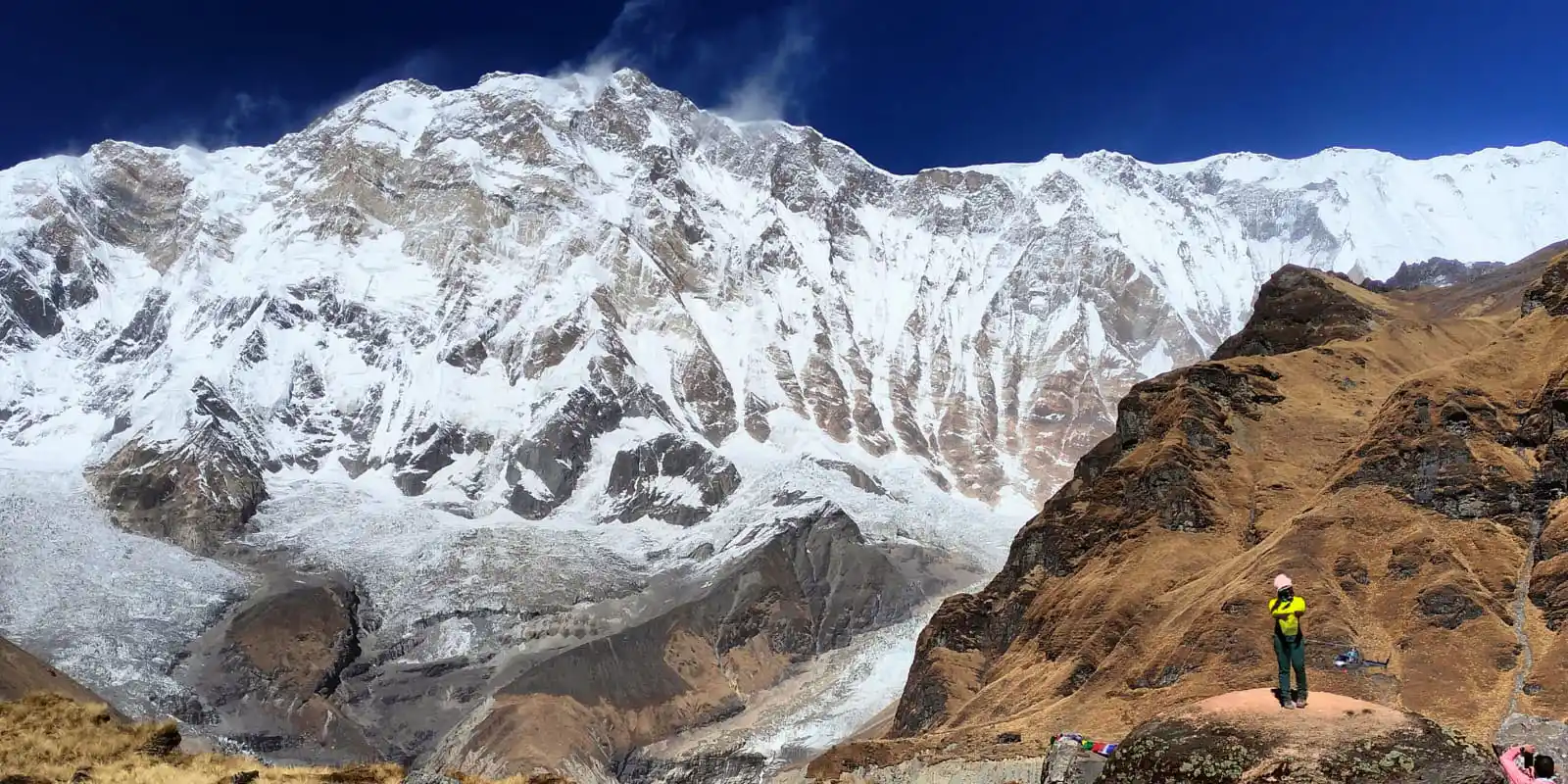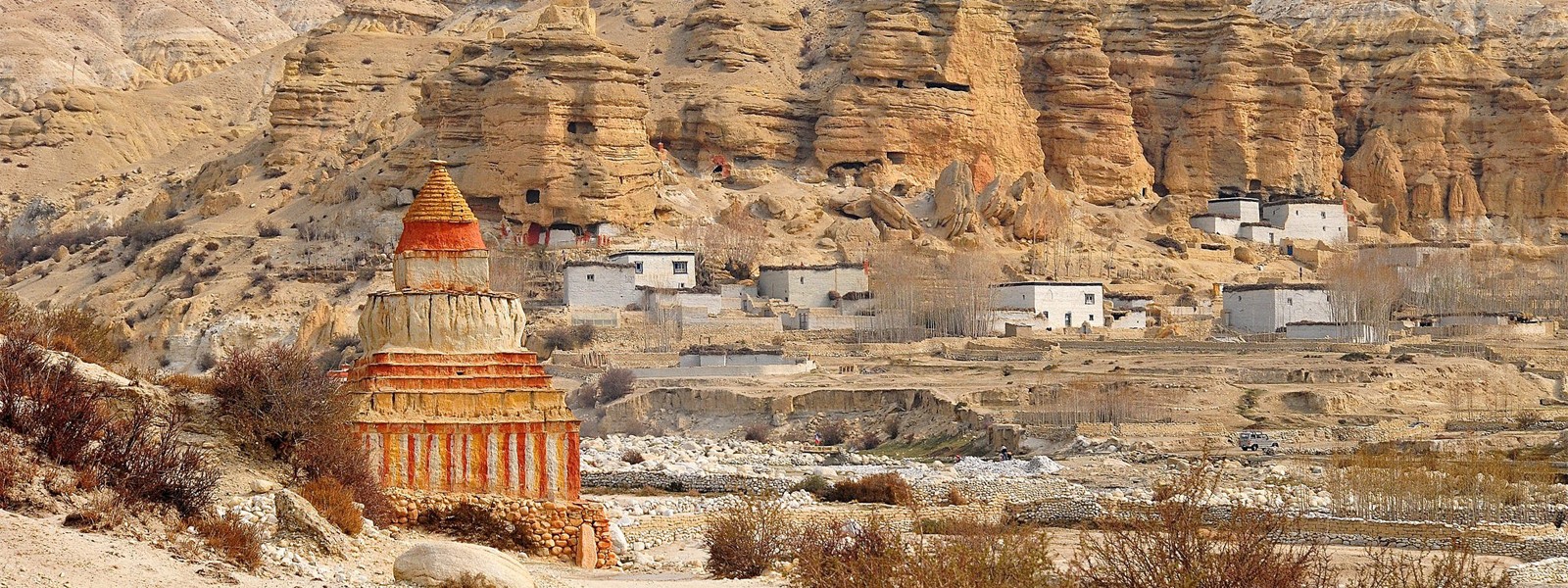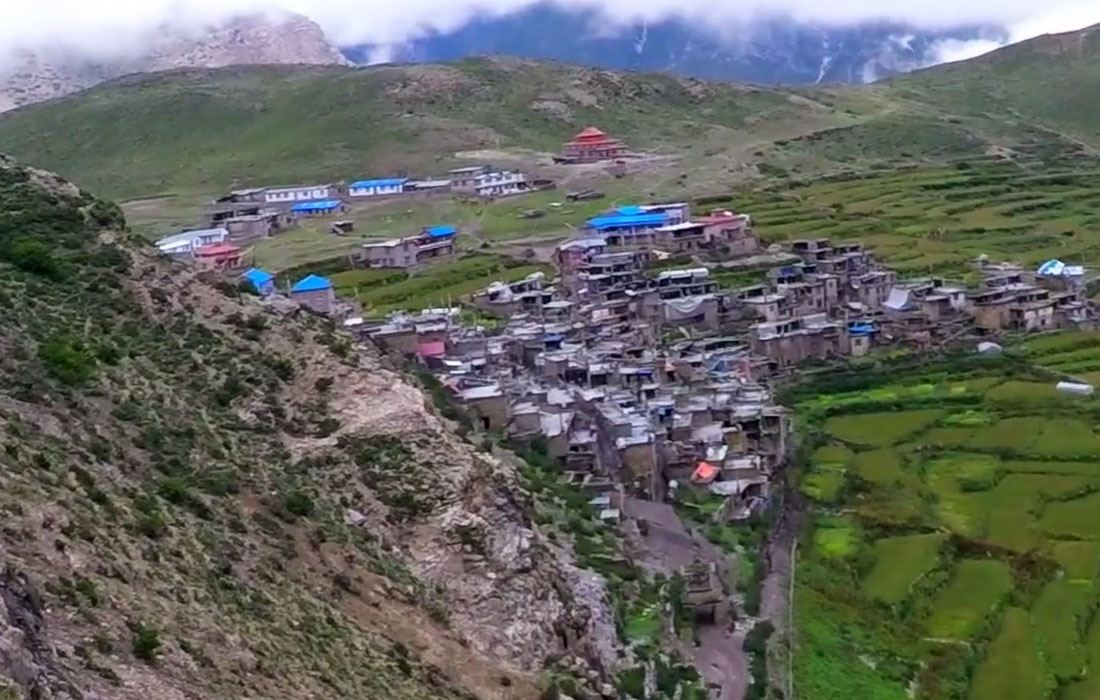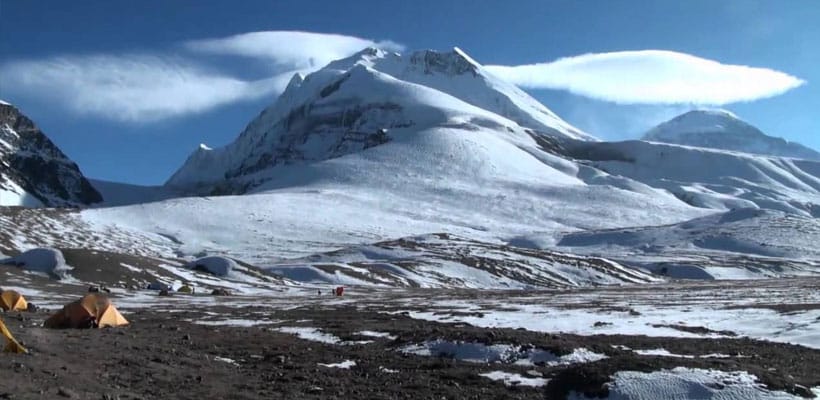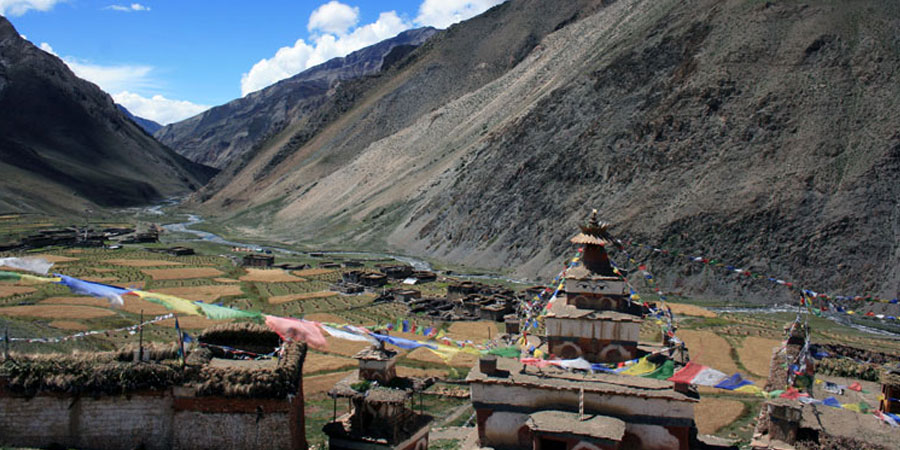Accommodation during Manaslu Circuit Trekking With Tsum Valley
- In Kathmandu we provide comfortable accommodation in 3-star hotels with breakfast on a twin-sharing basis.(Private room accommodation can be organized at an extra cost)
- During the trek, we provide comfortable teahouse accommodation on a twin-sharing basis. Hot showers, Wi-Fi, and device charging are available at an additional cost.
Meals and Drinking water on Manaslu Circuit Trekking With Tsum Valley
During the trek, you’ll be served three fresh and nutritious meals each day—breakfast, lunch, and dinner—at local teahouses along the route. The menus feature traditional Nepali dishes like dal bhat (rice, lentils, and vegetables) alongside Tibetan favorites such as momos, noodles, soups, pancakes, and eggs. Meals are simple yet wholesome, giving you the energy needed for this rewarding trek.
Staying hydrated is essential throughout your journey. Bottled water can be purchased along the trail, but we encourage carrying a reusable water bottle to reduce plastic waste. Your guide will provide water purification tablets or drops to ensure safe drinking water during the trek.
Required Permits for the Manaslu Circuit Trekking With Tsum Valley
For the Manaslu Circuit Tsum Valley Trek, you’ll need a ACAP, MCAP, and MANASLU and TSUM Valley Restricted permits, and a TIMS Card—but don’t worry, we’ve got it all covered. All permit fees are included, and we’ll take care of the paperwork so you can focus on enjoying your trek.
- Annapurna Conservation Area Permi:- NPR 3,000 per person.
- Manaslu Conservation Area Permit:- USD 30
- Tsum valley restricted Permit:- USD 40 per person
Best Time for Manaslu Circuit Trekking With Tsum Valley
The ideal seasons for the Manaslu Circuit Tsum Valley Trek are spring (March to May) and autumn (September to November). During these months, you can expect stable weather, clear skies, and stunning Himalayan views. Spring is known for colorful wildflowers and blooming rhododendrons, while autumn offers crisp air and excellent visibility.
Winter (December to February) brings colder temperatures and snow at higher elevations, providing a quieter trekking experience for those prepared for the cold. The monsoon season (June to August) is less ideal due to heavy rainfall and potential landslides. No matter when you go, we’ll ensure your trek is safe, comfortable, and unforgettable.
Manaslu Circuit Trekking With Tsum Valley Difficulties
The Manaslu Circuit Trekking with Tsum Valley is a demanding adventure featuring daily hikes of 5 to 7 hours over steep ascents, rocky paths, and remote high-altitude terrain. The trek rises gradually from lower villages at about 700 meters to the Larkya La Pass (5,106 meters), the highest point on the route. Such high elevations increase the risk of altitude sickness, especially for those who are not properly acclimatized. That’s why our itinerary includes acclimatization days at key locations like Sama Gaun to help your body adjust safely.
You will also be trekking in a remote area with limited lodges and basic facilities, which adds to the challenge and adventure but requires good preparation. The descent from Larkya La Pass is long but gradual, allowing your body to recover as you make your way back to lower elevations. With proper fitness, preparation, and the support of our experienced local guides, even those new to high-altitude trekking can confidently complete this incredible journey.
Altitude Sickness and Prevention on the Manaslu Circuit Trekking With Tsum Valley
At Aarohi Holiday, your safety is our highest priority—especially on high-altitude treks like the Manaslu Circuit with Tsum Valley. Our expert guides are trained in altitude sickness prevention, first aid, and emergency procedures. They closely monitor every trekker for signs of Acute Mountain Sickness (AMS) and ensure a slow, steady ascent to promote safe acclimatization.
Common AMS symptoms such as headache, nausea, dizziness, or unusual tiredness are always treated with care. If necessary, our team will take swift action, including rest, hydration, controlled descent, or emergency evacuation. Before the trek starts, you’ll receive a thorough safety briefing, and your guide will keep in regular contact to watch over your health. With these precautions and our experienced team by your side, you can confidently enjoy this stunning Himalayan adventure
Travel Insurance for Manaslu Circuit Trekking With Tsum Valley
Aarohi Holiday strongly recommends that all trekkers secure comprehensive travel and medical insurance before starting the Manaslu Circuit Trekking with Tsum Valley. This trek passes through remote, high-altitude areas where medical facilities are limited and emergency support may be challenging to reach. Your insurance should cover high-altitude trekking up to at least 5,500 meters and include protection for personal injury, accidents, medical treatment, and emergency evacuation—particularly helicopter rescue if needed.
We also suggest coverage for trip cancellations, delays, lost or damaged luggage, and other unforeseen events. Having the right insurance gives you peace of mind to enjoy your trek fully, knowing you are protected in any emergency. With this safety net, you can focus on experiencing the breathtaking beauty and culture of the Manaslu Circuit and Tsum Valley, while Aarohi Holiday manages all the details.
Manaslu Circuit Trekking With Tsum Valley Itinerary
The Manaslu Circuit Trekking with Tsum Valley offers an incredible journey through some of Nepal’s most remote and culturally rich Himalayan landscapes. Your adventure begins with arrival in Kathmandu, where you can explore the city and its UNESCO World Heritage sites before heading out on the trek. After a scenic drive to Machha Khola, the trekking starts, following the Budhi Gandaki River and passing through picturesque villages such as Jagat, Lokpa, and Chumling.
he trek continues deeper into the mystical Tsum Valley, visiting Chhokangparo and the sacred Mu Gompa monastery. You’ll experience authentic local culture, ancient monasteries, and stunning mountain views. The route then moves on to Nile, before descending back through Chumling and Deng to Namrung and Samagaon, with acclimatization and rest days to help your body adjust. Crossing the challenging Larkya La Pass, you’ll reach Bimthang and then descend toward Tilije and Dharapani. The trek concludes with a drive back to Kathmandu for your final departure. This 21-day itinerary blends spectacular scenery, cultural immersion, and an unforgettable Himalayan trekking experience.
Manaslu Circuit Trekking With Tsum Valley Cost
The cost of the Manaslu Circuit Trekking with Tsum Valley varies depending on the season, group size, and level of service. Our 21-day trek is priced at USD 1,500 per person, covering all essential services from your arrival in Kathmandu to your final departure. This all-inclusive package ensures a safe, comfortable, and unforgettable trekking experience through one of Nepal’s most remote and beautiful regions.
This price is based on a minimum of Two person. For group bookings, we offer special discounts ranging from 5% to 10%, and the group leader can join the trek free of charge. With transparent pricing and no hidden fees, Aarohi Holiday guarantees excellent value for an extraordinary Himalayan adventure in the Manaslu Circuit and Tsum Valley.
Important Notes for Manaslu Circuit Trekking With Tsum Valley
- This itinerary includes travel by shared bus to Machha Khola, which takes approximately 7 to 8 hours by road. If you’d prefer a private jeep for greater comfort and flexibility, just let us know—we’ll gladly provide details on the additional cost.
- Porters can carry up to 20kg each, but we recommend packing under 10kg per person as we provide one porter for every two trekkers. A durable duffle bag will be supplied to carry your gear comfortably.
- There are no ATMs on the Manaslu Circuit Trekking With Tsum Valley, so carry enough cash from the city before starting your trek.
- Meals are included throughout the trek. However, extra charges apply for hot showers and charging electronic devices at teahouses and lodges.
- Meals and entry fees for sightseeing in Kathmandu are not included in the trek package.
- Drones require hard-to-get permits, so it’s best not to bring.
Fitness Preparation for the Trek
The Manaslu Circuit Trekking with Tsum Valley is a moderate to challenging high-altitude trek that demands good physical fitness and endurance. To enjoy the trek fully and reduce the risk of fatigue or injury, we recommend starting regular cardiovascular exercises like hiking, jogging, cycling, or swimming at least 6 to 8 weeks before your trip.
In addition, strength training targeting your legs, core, and back will be beneficial, as the trail involves steep climbs, descents, and carrying a daypack. Practicing long walks with a loaded backpack will help prepare you for the trekking conditions. Being physically fit not only boosts your stamina but also aids your body in acclimatizing more effectively to the high altitudes encountered on the trek.
A Typical Day on the Trail
The Manaslu Circuit Trekking with Tsum Valley is a moderate to challenging high-altitude trek that demands good physical fitness and endurance. To enjoy the trek fully and reduce the risk of fatigue or injury, we recommend starting regular cardiovascular exercises like hiking, jogging, cycling, or swimming at least 6 to 8 weeks before your trip.
In addition, strength training targeting your legs, core, and back will be beneficial, as the trail involves steep climbs, descents, and carrying a daypack. Practicing long walks with a loaded backpack will help prepare you for the trekking conditions. Being physically fit not only boosts your stamina but also aids your body in acclimatizing more effectively to the high altitudes encountered on the trek.
Arrival Instruction
Upon your arrival at Tribhuvan International Airport, our company representatives are stationed to welcome you to the country. We request you to carefully look for your name being held by our representatives following the events upon landing. The representatives are responsible to escort you to your hotel in Kathmandu. You will see men offering you to carry luggage and take you to your destination as you exit the airport. We request you pay no attention to these people and follow the designated representatives and follow their instructions. You will also need to keep an eye on your luggage and belongings to avoid any complications.
Nepal Visa Entry Procedure
For entry into Nepal, there are visa requirements everyone (except Indian nationals) must complete before being allowed to pass through immigration. This is for air travel as well as overland transportation. Most visitors may obtain a visa to enter Nepal, however, there are exceptions. Three options are available for entry.
Please have a passport valid for at least 6 months from the time of entry, and have cash ready, preferably in US dollars, though there are other currencies Nepal Immigration accepts. If you are entering via overland, you must have US cash and 3 passport photos. For arrival by air, the kiosks at the airport take your picture for you.
- 15-day single entry: US $30
- 30-day single entry: US $50
- 90-day multiple entries:US $125
For the most up to date list of exceptions for visa on arrival or to obtain the most current visa information, visit the Nepal Department of Immigration website.
